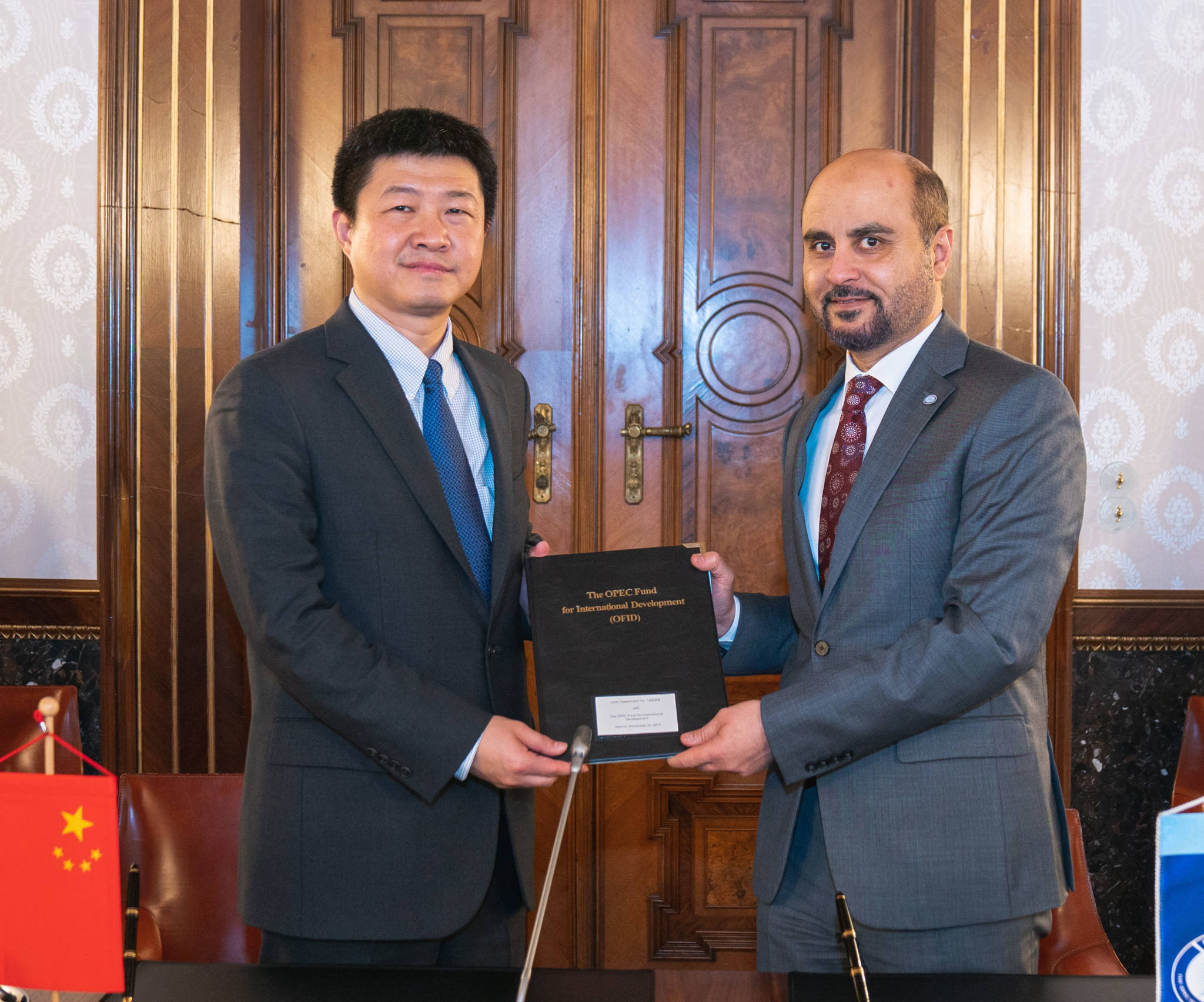We use Cookies. Read our Terms
- News
- New infrastructure for a changing China
New infrastructure for a changing China
Elderly care takes priority

OPEC Fund Director-General Dr Abdulhamid Alkhalifa (right) and Deputy Director-General of PRC Ministry of Finance Han Bin at the loan signing of the Hezhou Healthcare Project.
In 2019, the OPEC Fund intensified its longstanding cooperation with China by signing a US$50 million loan to finance the Hezhou Healthcare Project.
The Hezhou Healthcare Project loan will support the government’s efforts to provide comprehensive elderly health care services in the Guangxi Zhuang Autonomous Region (GZAR), which borders Vietnam. A new 900-bed health care center will be built in Hezhou City, also providing long-term employment for over 400 staff.
Almost 90 percent of the OPEC Fund’s approvals to China (cumulatively over US$317 million) have supported the country’s educational and health sectors. In particular, resources have been dedicated to two of the Chinese government’s priority areas: infrastructure for tertiary level vocational education and health care centers for the elderly.
Given that China faces a declining labor force and an increasingly aging population, tertiary education and elderly care are important enablers of socio-economic growth. On the education front, China’s economy has begun to shift toward more skill-intensive products and technologies, increasing the demand for high-skilled workers. A recent Chinese State Council report shows ambitious reform proposals including plans to support an additional 15 million people to upgrade their skills, and reframing vocational education as a viable alternative to an academic degree.
China’s focus on elderly care is driven by expectations that come 2050, more than one-third of the country’s population will be aged 60 or over, meaning China will need to care for an estimated 402 million 60-plus year-olds by 2040.